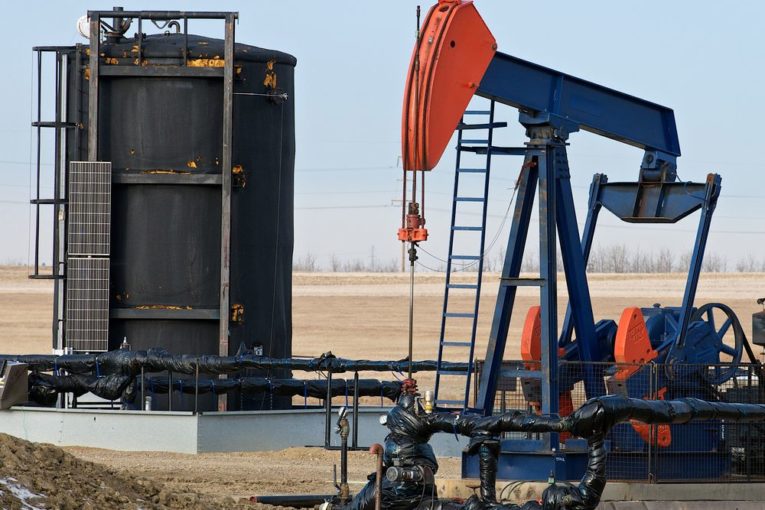
The blue-light special price for Canadian oil has reached ridiculous levels — and it’s getting worse.
The price for Western Canadian Select (WCS) crude fell to just US$26 a barrel on Thursday, while benchmark West Texas Intermediate crude closed at $71.98.
At one point, the price differential sat at US$52 a barrel, according to Bloomberg, and it didn’t get much better on Friday, with the discount closing at $48.50 a barrel.
“It’s a crisis,” Tim McMillan, chief executive of the Canadian Association of Petroleum Producers, said Friday.
“When we were cancelling pipeline projects over the last decade, this was the end result we should have expected.”
Rising production, a lack of pipeline capacity to move oil out of Western Canada, and several refineries undergoing maintenance in the U.S. Midwest have conspired to put the bite on Canadian oil prices.
It’s not unusual to see the price discount on WCS fluctuate, but the gap has significantly widened this year.
Last October, the price differential averaged US$11.71 a barrel, according to provincial data.
The discount is also spreading to the light oil blend Edmonton Par, which traded at a $28.50 discount to West Texas Intermediate crude on Friday.
“Right now, Canada is the cheapest place in the world to buy barrels. We are basically giving this stuff away,” said analyst Martin King of GMP FirstEnergy.
Analysts say U.S. refinery outages at this time of year often cut back on Canadian oil demand by about 550,000 barrels per day, but that number has nearly doubled this fall and likely won’t be resolved for several weeks.
Shipments of oil by rail climbed earlier in the year, but appear to have stalled.
“We are operating right on the knife’s edge on egress out of Alberta,” said Scotiabank commodity economist Rory Johnston.
“It’s not just about heavy (oil), it’s about all Canadian oil that is getting punished here by the lack of pipeline capacity.”
If it doesn’t shrink soon, the discount will have consequences for petroleum producers, future industry capital spending, and revenue for governments.
Every $1 increase in the price discount for Western Canadian heavy oil over the course of a year will cost the Alberta treasury about $210 million.
Whitecap Resources CEO Grant Fagerheim estimates the price differential will cost all producers up to $100 million a day in lost revenues at current levels.
Other estimates are smaller, but the key point is revenue is being lost because of the country’s inability to build new pipelines and get resources to market in the most efficient manner possible.
“Heavy oil producers are getting 40 per cent of what they normally would be paid if we had access to markets,” said Fagerheim.
“It’s crazy, crazy, crazy.”
Canada’s pipeline system has the capacity to export about four million barrels a day and is space currently being rationed.
Western Canadian crude supplies continue to rise and are expected to average 4.4 million barrels per day this year, climbing to 4.7 million bpd in 2019, said analyst Kevin Birn of consultancy IHS Energy.
With companies preparing their 2019 spending plans, producers will be hard pressed to make investment decisions in such a volatile price environment, he warned.
“We are leaving a lot on the table every day in terms of the value of crude, but we’re losing out as well on the investment that could be occurring,” Birn said.
The pressing question is what can be done about it in the short-term?
The short answer: Not much.
Until Enbridge’s Line 3 replacement project is completed (expected later next year), producers and analysts say the only obvious near-term fix is to ship more oil by rail.
However, the rail sector faces its own limitations, such as a lack of additional locomotives to handle the increasing demand.
Provincial officials are watching the situation, and vow to keep pressing to see new pipelines built.
“We are also looking very closely at all options that could help ease the differential in the short term, including apportionment on existing pipelines and measures to address rail constraints,” Energy Minister McCuaig-Boyd said in a statement.
The impact of the growing discount on Canadian oil won’t take long to affect petroleum producers.
Less cash flow for producers means less drilling activity and fewer jobs in the sector, said the head of Precision Drilling.
The widening differential means the drilling outlook in Canada will be diminished heading into the new year, Precision’s Kevin Neveu told reporters this week.
Earlier this year, Scotiabank forecast the Canadian oilpatch would be stuck for at least 18 months in a period of constrained takeaway capacity, potentially shaving $15.6 billion in revenues from the sector this year.
Johnston said rail shipments, which sat at 200,000 barrels per day in the summer, will grow to near 300,000 by the end of the year and continue to climb in 2019.
As the U.S. refineries come back on line later in the year, he believes the pressure on Canadian oil prices should ease.
But the longer-term solution is to build new pipeline projects like the Trans Mountain expansion, Line 3 and Keystone XL.
McMillan said he would welcome an emergency meeting with provincial and federal government officials to look for other solutions, but noted: “There is no silver bullet here.”
The core of the problem is that pipeline projects that could have gone ahead several years ago have been delayed or derailed.
As oil production continues to increase, the price discount will remain a headache in 2019.
“There is not an immediate fix to this, unless some producers start suspending their production,” added Fagerheim.
“We have put ourselves in such a difficult situation, to me it’s staggering what we’ve done.”
Chris Varcoe is a Calgary Herald columnist.
You can read more of the news on source
